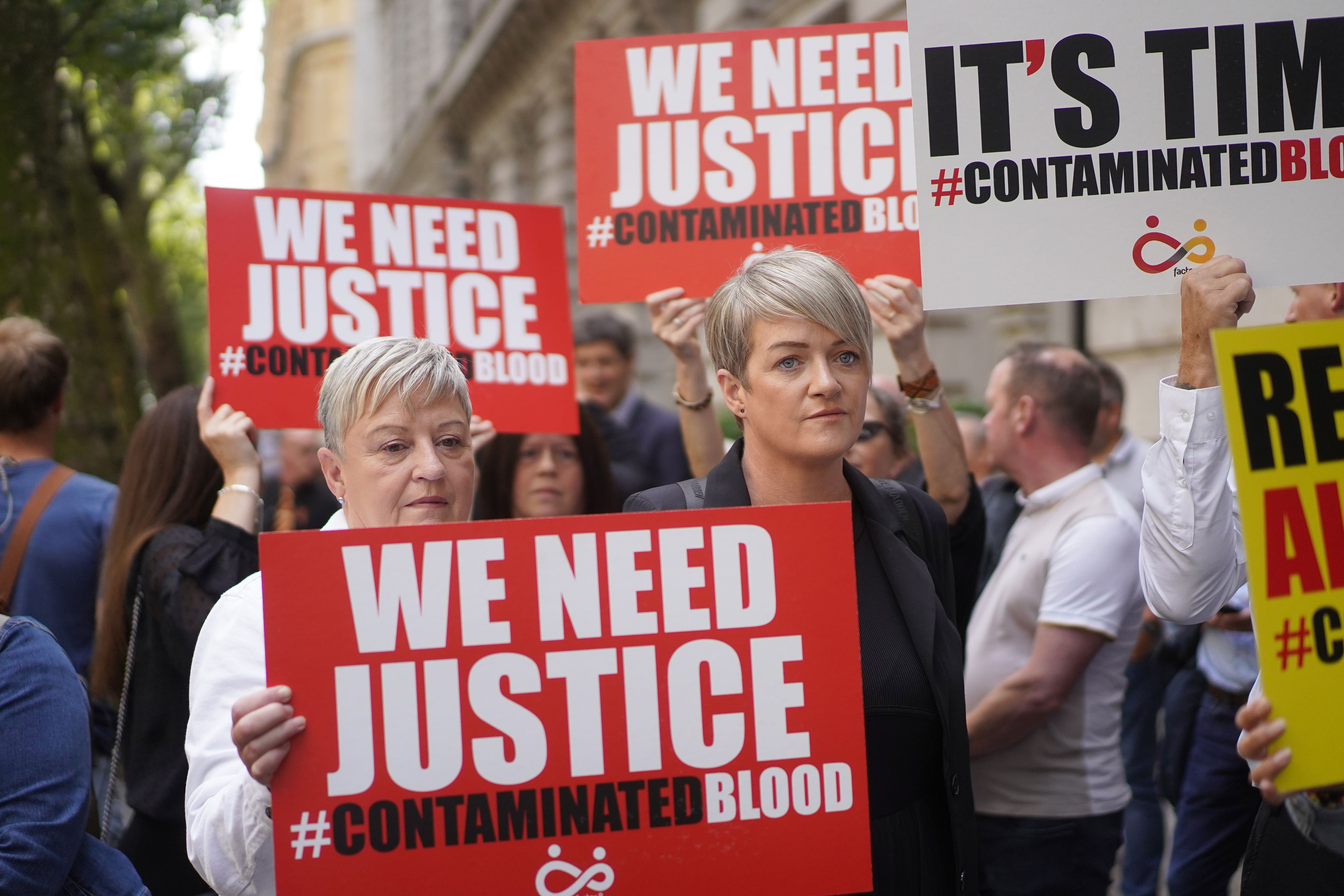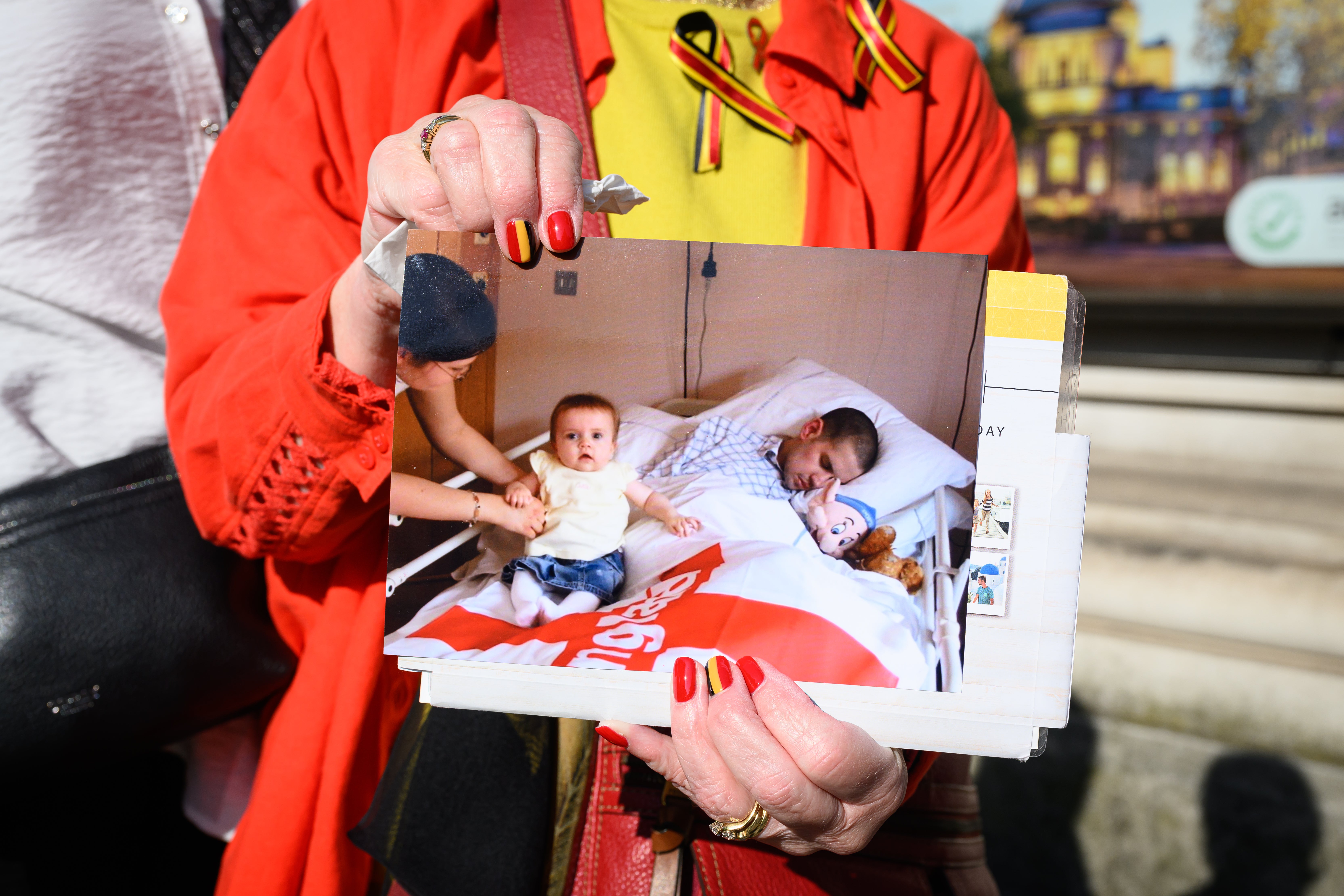Infected Blood Inquiry: Politicians and doctors complicit in cover-up leading to thousands of deaths
Patients are continuing to die following a cover-up of the infected blood scandal across the political and medical system
Your support helps us to tell the story
From reproductive rights to climate change to Big Tech, The Independent is on the ground when the story is developing. Whether it's investigating the financials of Elon Musk's pro-Trump PAC or producing our latest documentary, 'The A Word', which shines a light on the American women fighting for reproductive rights, we know how important it is to parse out the facts from the messaging.
At such a critical moment in US history, we need reporters on the ground. Your donation allows us to keep sending journalists to speak to both sides of the story.
The Independent is trusted by Americans across the entire political spectrum. And unlike many other quality news outlets, we choose not to lock Americans out of our reporting and analysis with paywalls. We believe quality journalism should be available to everyone, paid for by those who can afford it.
Your support makes all the difference.A chilling and pervasive cover-up by politicians, doctors and civil servants of the worst treatment disaster in the history of the NHS has been exposed in a damning landmark public inquiry.
A 2,000-page report into the “shameful” infected blood inquiry scandal has accused the government and NHS of a calamity of failures that left 30,000 patients infected with HIV and hepatitis. More than 3,000 people have died due to infected blood, blood products and tissue, with the number continuing to rise.
In a new horrifying revelation the inquiry, led by Sir Brian Langstaff, suggested hundreds of people infected during childbirth may still be living undiagnosed and unaware - it has recommended patients who might have had blood transfusions prior to 1996 should be tested for Hepatitis C.
The long-awaited report, which details decades of officials hiding the truth, said: “Viewing the response of the NHS and government, the answer to the question ‘was there a cover-up?’ is that there has been.
“Not in the sense of a handful of people plotting in an orchestrated conspiracy to mislead, but in a way that was more subtle, more pervasive and more chilling in its implications.”

It warned that most infections could and should have been avoided, revealing that the government knew by 1982 that whatever was causing AIDS might be transmissible by blood products, but continued to use them into the 1990s.
It was known as early as the 1970s that the virus responsible for Hepatitis C was responsible for the majority of post-transfusion infections.
The scandal dates back even further as the inquiry makes clear it was “well known” from at least the early 1940s that blood transfusions or the use of plasma could transmit hepatitis.”
A total of 1,250 people with bleeding disorders were infected with HIV through, around 380 of whom were children, and up to 6,250 are estimated to have been infected with Hepatitis C.
At least, 26,800 patients who received blood transfusions are estimated to have been infected with Hepatitis C.
Sir Brian said: “In families across the UK, people were treated by the NHS and over 30,000 were given infections which were life shattering. 3,000 people have already died and that number is climbing week by week. Lives, dreams, friendships, families, finances were destroyed.
“This disaster was not an accident. The infections happened because those in authority – doctors, the blood services and successive governments – did not put patient safety first. The response of those in authority served to compound people’s suffering.
“The government is right to accept that compensation must be paid. Now is the time for national recognition of this disaster and for proper compensation to all who have been wronged.”
Dozens of failures by the government and NHS have been highlighted. They include:
- Allowing the importation and distribution from 1973 of blood products made in the US or Austria which carried a high risk of causing hepatitis
- Teenage young boys being treated “as objects for research” and infected with HIV and Hepatitis C through contaminated products
- Treating children “unnecessarily” with risky blood products rather than choosing safer treatments
- Deliberate destruction of some documents and loss of others, including people’s medical records
- Falsely reassuring the public and patients that blood did not carry AIDS, that the risk of AIDS for people with bleeding disorders was small, that Hepatitis C was relatively mild and inconsequential
- Failing to tell people they were infected or delaying telling them, sometimes for years
- Failing to trace infected patients once universal screening of Hepatitis C was introduced
- Repeatedly using inaccurate and defensive language which “cruelly” told people that they had received the best treatment available
- Giving too many transfusions when they were not clinically needed
It found attempts by officials were made to hide the truth to “save face and save expense” and that the NHS was directly accused of a “defensive closing of ranks”.

In May 1983 leading epidemiologist Dr Spence Galbraith wrote a paper, which he sent to the Department for Health, stating: “I have reviewed the literature and come to the conclusion that all blood products made from blood donated in the USA after 1987 should be withdrawn from use until risk of AIDS transmission from by these products has been clarified.”
However, during a meeting, the department recorded Dr Galbraith’s recommendation as premature and unbalanced and products were not withdrawn at that stage.
By March 1984 all blood products manufacturers in the US were warning of the risk of contracting AIDS from using their products.
Lord Kenneth Clarke, who was minister for state at the Department for Health between 1982 and 1985 and health secretary between 1989 and 1990, was described as “blase” in his response to the inquiry about the collection of blood from prisons in the US as late as 1983.
In September 1983 in the publication of an AIDS donor leaflet Lord Clarke said: “It has been suggested that AIDS may be transmitted in blood or blood products. There is no conclusive proof that this is so.”
This line was repeated in various forms by other officials, including to the press and in Parliament. The inquiry has said while “technically correct” the “no conclusive proof” line was “indefensible” and gave “false reassurance.”
Victims of the contaminated blood scandal have demanded former health secretary Lord Clarke apologises for his “absolutely appalling” behaviour towards the hemophiliac community.
Speaking to reporters after the publication of an inquiry’s damning report into the scandal, the group of victims also said Lord Clarke showed “disdain for the inquiry itself and its process” when he gave evidence.
The government has been criticised in the report over its decades long delay in bringing a public inquiry, with enough evidence of the harm caused to those with haemophilia as early as 1986.
Victims and families said at a press conference, “there was a deliberate attempt to lie and conceal - not just by one person, this was systemic - by government and public health care officials.”
The inquiry cannot make recommendations for criminal prosecutions, however families have called for individual doctors to face clinical negligence prosecutions.
They said: “There are doctors out there who should have been prosecuted with gross negligence manslaughter… those people should have been in the dock… because of delay (to the inquiry) so many people will not see justice.”
Patients gave evidence that they were told by their doctors the risks of them contracting hepatitis were “relatively unimportant” and those who had bleeding disorders were told the risk of AIDS was “less dangerous” than not being treated with “commercial concentrates” which are blood products made from pools of donors.

Join our commenting forum
Join thought-provoking conversations, follow other Independent readers and see their replies
Comments